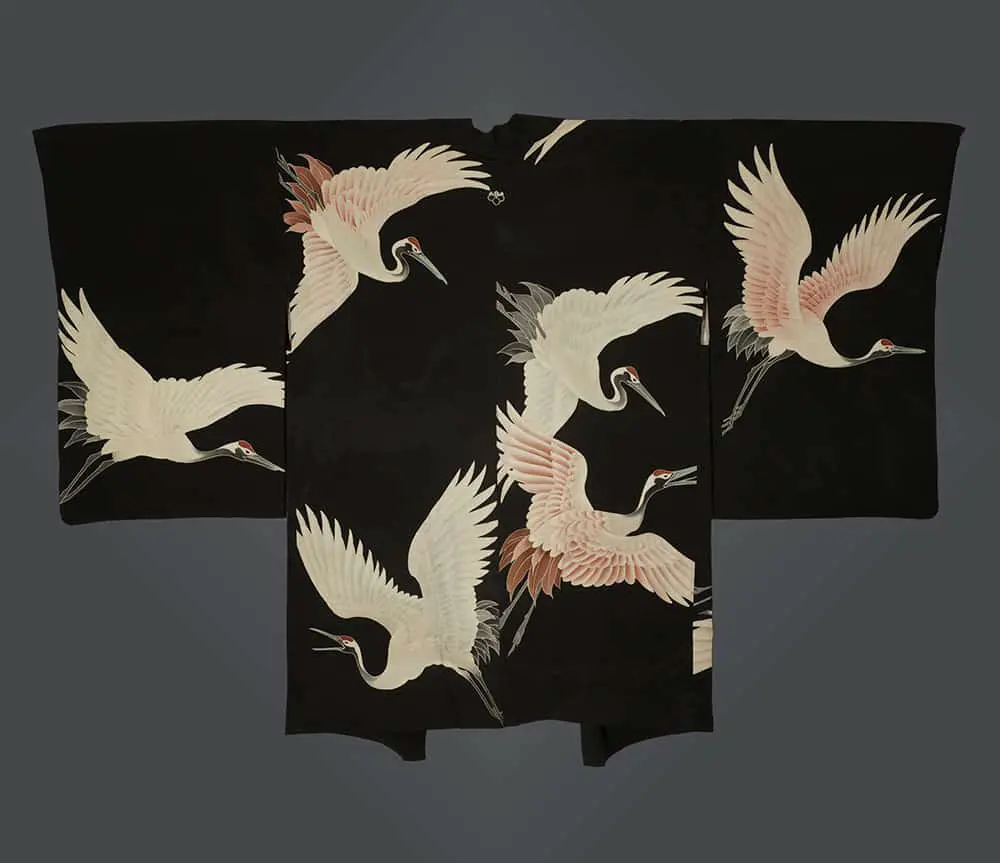This haori features a dynamic and elegant design of flying cranes rendered in yuzen painting against a stark black rinzu silk background. The cranes are depicted in various stages of flight, their wings outstretched and bodies gracefully curved, creating a sense of movement and energy. The color palette is restrained but striking, with the cranes painted in shades of white, soft pink, and light orange, with black and red accents, particularly on their heads and tail feathers. This limited palette allows the elegant forms of the cranes and the skillful brushwork of the yuzen technique to take center stage. The black serves as a dramatic backdrop, giving the piece a sense of depth.
The dynamic composition, with the cranes arranged asymmetrically yet in harmony, reflects the Japanese aesthetic principle of fukinsei (asymmetrical balance). The yuzen painting technique, known for its delicate lines and subtle gradations of color, further enhances the elegance and refinement of the design. The composition of the cranes creates a rhythmic pattern, almost like musical notes across a staff, adding a lyrical quality to the design.
While the haori's design is firmly grounded in Japanese tradition, there's a subtle affinity with certain aspects of Art Nouveau. The flowing lines of the cranes' wings and bodies, and the overall sense of movement and dynamism, resonate with the Art Nouveau emphasis on organic forms and decorative stylization. However, the haori maintains a sense of restraint and subtlety that is characteristic of Japanese aesthetics, unlike the often more elaborate designs of Art Nouveau. The stark contrast between the cranes and the black background might also evoke a sense of the dramatic, a quality sometimes seen in Art Deco, though the haori's style remains more closely aligned with traditional Japanese aesthetics. Overall, the aesthetic is one of serene beauty and sophisticated elegance.
Dimensions: 49inches (124 cm) from sleeve-end to sleeve-end and 33 inches (84 cm) in height.
.avif)











